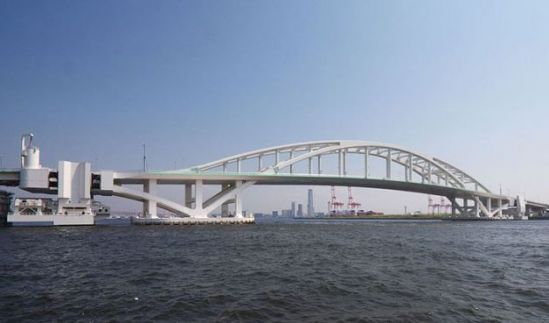Mor Temor
Arch. Mor Temor is international Architecture firm committed to designing unique buildings and one of a kind architectural concepts.

2.11 Osaka (Japan) Floating Bridge
A 410-m-long floating swing arch bridge, with a main span of 280 m, was constructed across a water channel; rests on two hollow steel pontoons (Fig. 21).

Fig. 21 Osaka Floating Bridge.
The floating bridge is part of a 940-m-long road crossing, the Yumemai Bridge, connecting two reclaimed islands to the regional road network. The design has addressed specifically the actions of waves, wind and earthquakes, swinging mechanism and durability. The double-arch rib bridge is 38.8 m wide and accommodates six traffic lanes. The bridge can swing around a pivot axis near one end of the girder (Fig. 22). The pontoons are protected against corrosion by lining their sides with titanium plate, with the other wet surface under cathodic protection. The mooring system consists of dolphins with movable reaction walls and rubber fenders. The reaction walls are located on the fixed dolphins with piles driven into the seabed. The structure is designed to be strong and stable enough to withstand typhoon-level winds and waves. The swing system of the floating bridge allows large vessels to pass through the channel as needed, a few times a year. The swinging operation begins by inserting the pivot axis and jacking up the transitional side bridges. Then the reaction walls are released from their mooring position and rotated, and the bridge is swung about the pivot axis by tugboats. After rotation is completed, the bridge is temporarily moored in the open position. Reversing the procedure restores the floating bridge to its original position (Watanabe, 1998).
Fig. 22 Swing around a pivot axis near one end of the girder.
Arch. Mor Temor